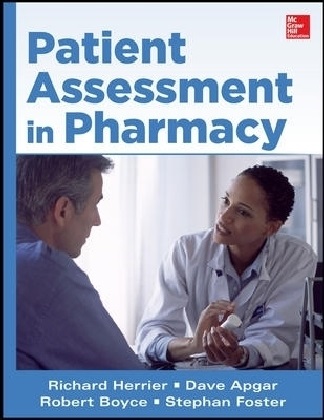Read more
Learn the art and science of patient assessment to succeed in real-world pharmacy practice
The goal of Patient Assessment in Pharmacy is to impart the assessment and practice skills necessary to provide optimal patient care when working in an ambulatory care environment.
This unique text explains how to integrate pathophysiology, medical history, physical findings, and laboratory test results to accurately assess and monitor patient problems. Patient Assessment in Pharmacy will help you make a more accurate diagnosis and enable you to better advise patients about appropriate use of products intended for self-care.
In order to be as clinically relevant as possible, Patient Assessment in Pharmacy focuses on the symptom complexes and diseases that pharmacists most frequently encounter in an ambulatory care setting.
List of contents
Principles of Patient Assessment· General Approach to the patient· History Taking· Physical Assessment· DocumentationCommunicating with Patient and medicalstaff·· Approach to differential diagnosisAssessment of Symptoms· Runny nose· Red eye· Sore throat· Ear pain· Cough· Difficulty breathing· Chest pain· Heartburn· Nausea· Diarrhea· Constipation· Sports injusries· Swollen painful joints· Headache· Dysuria· Vaginal discharge· Skin RashAssessment in the Diagnosis and Management ofChronic Diseases and Their Complications· Hypertension· Hyperlipidemia· Diabetes Mellitus· Hypothyroidism· Seizure Disorders· Congestive Heart Failure· Asthama/COPD· TIA/CVA· Osteoarthritis· Osteoporosis· Oral ContraceptionAssessment of Potential Drug Related Problems· Liver· Renal· Bleeding· Psychiatric Medications
About the author
Rick Herrier, PharmD and David Apgar, PharmD (Tucson, AZ) are affiliated with the University of Arizona, College of Pharmacy.
Robert Boyce, RPh (Corvallis, OR) isDirector of Pharmacy, Plageman Student Health Center, Oregon State University.
Stephan Foster, PharmD (Memphis, TN) is affiliated with the University of Tennessee
Summary
Lets you learn the art and science of patient assessment to succeed in real-world pharmacy practice. This book explains how to integrate pathophysiology, medical history, physical findings, and laboratory test results to accurately assess and monitor patient problems.

